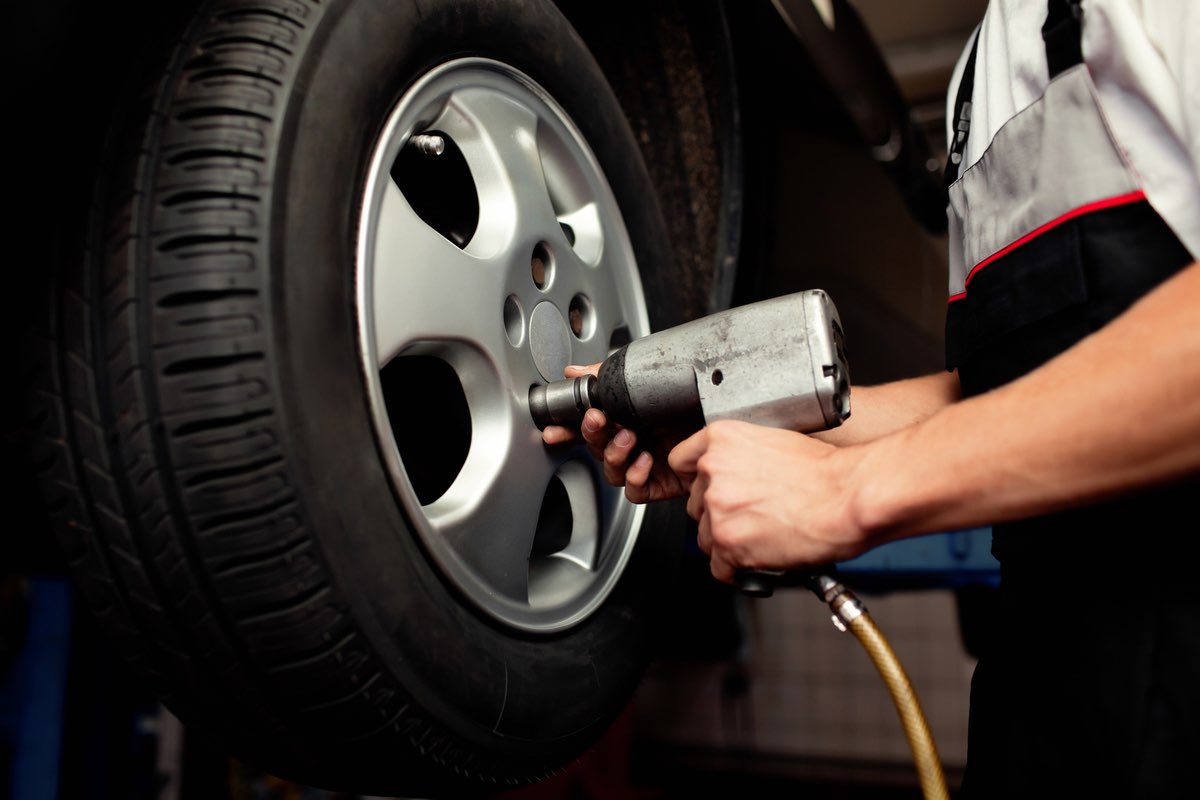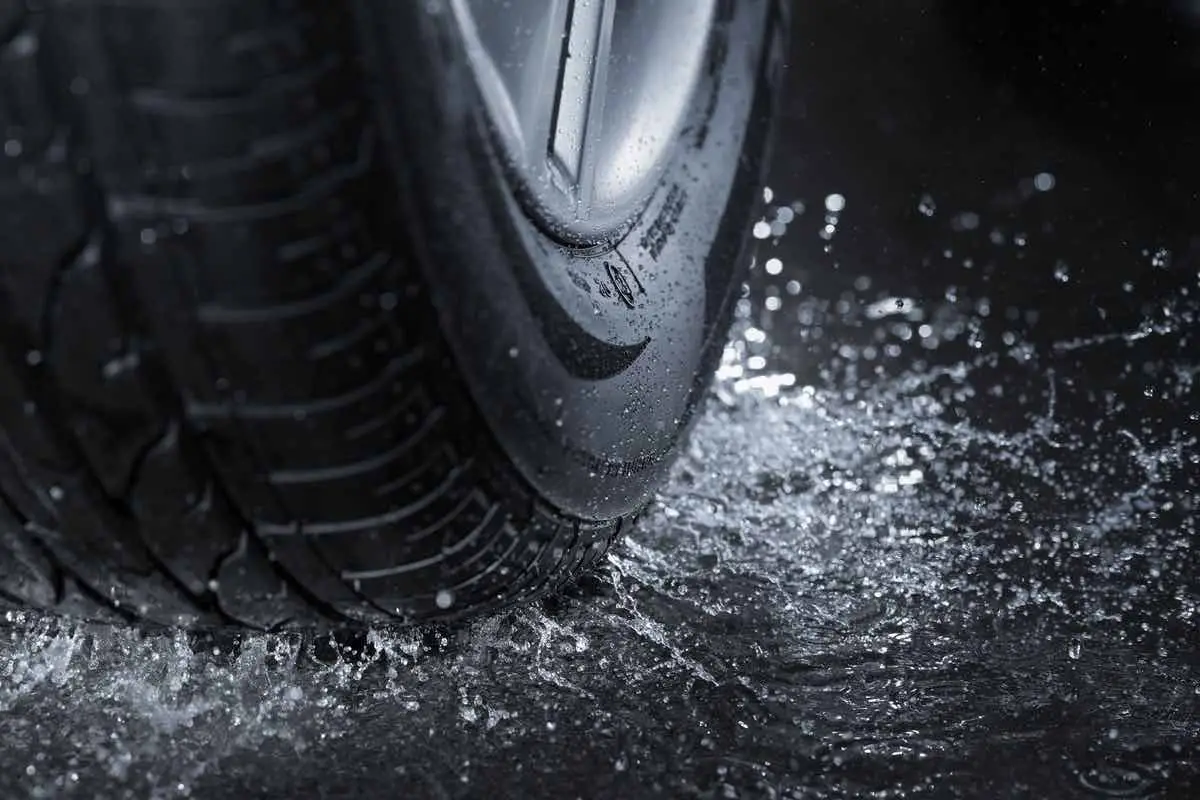Tire rotation is an important task to keep your car running smoothly. It is a simple procedure that can help you get more life out of your tires and save money in the long run. So, if your car has 35-inch (88.9-cm) tires, it is crucial to know how often you should rotate them.
The ideal time to rotate your 35-inch (88.9-cm) tires is every 7,500 miles (12,070 km). This interval will ensure that you have a set of tires with even tread wear so they last as long as possible.
This guide will explain what tire rotation is, why it’s essential to do so regularly, and how often you should rotate your 35-inch (88.9-cm) tires. I’ll also tell you what happens if you don’t rotate your tires and realign your wheels regularly.

Reasons You May Need To Rotate 35-Inch Tires More Frequently
You should rotate your 35-inch (88.9-cm) tires at least every 7,500 miles (12,070 km) to ensure even tread wear and longer life in line with smaller-sized tires. However, there may be a reason to rotate your 35-inch (88.9-cm) tires more often in certain circumstances.
Thirty-five-inch (88.9-cm) tires are often used on 4×4 vehicles designed for off-road driving.
Off-road tires have larger spaces between the tread, which tends to cause the tread to wear faster than other tires. If your vehicle has all-road 35-inch (88.9-cm) tires, it would be wise to rotate them every 3000 miles (4,828 km) to ensure even tread.
Check out this Youtube video to see how to rotate 35-inch (88.9-cm) on a Jeep.
Why Do You Need To Rotate Your 35-Inch Tires?
Tire rotation is integral to maintaining your car, but many people do not understand why it is part of essential maintenance.
When tires are made, they have a particular pattern on the tread that helps them grip the road. When you drive your car and use your tires, they wear out in different directions.
Tire rotation is the process of moving your tires from one wheel axle to another. Rotating your tires will even out the wear on them, which helps prevent the unevenness that can cause your car to veer to one side.
Whether a daily commuter or occasional driver, it’s important to rotate your tires regularly. Tires wear differently depending on their usage and the type of driving they’re used for. For example, the tread on your 35-inch tires will wear out more slowly on the highway than going through town.
So, let’s break this down and look at why it’s so important to rotate your 35-inch tires regularly:
Regular Tire Rotation Reduces the Risk of Accidents
Unrotated tires are likely to develop uneven tread and bald spots. These signs of wear decrease the friction between the tire and the road, which increases the chance of losing control of the vehicle, especially on curves or turns.
Regular tire rotation will decrease the chance of this happening and, in turn, reduce the risk of an accident.
Tire Rotation Increases Tread Life
Tread life is measured in miles and can be affected by driving style, weather, and road conditions. Tire pressure, alignment, and rotation are three factors that affect tread life.
By rotating your tires every 7000 miles (11,265 km), you’ll get the most out of them.
Rotating Your Tires Will Improve Handling
Rotating your tires helps prevent uneven wear. When your tires have more even tread on them, you will notice a difference in how smooth the drive is. However, if you let the tread wear down and don’t rotate your tires, you may notice your car automatically veering to one side of the road while driving.
Veering is dangerous and inconvenient, so getting your 35-inch tires rotated is critical for your safety and the safety of other drivers.
Tire Rotation Could Improve Fuel Economy
If your tires haven’t been rotated and have uneven wear, this can increase the energy required to keep the tire moving. This can increase fuel consumption, meaning tire rotation will save you money on fuel in the long run.
This gas money all adds up over time, meaning that regular tire rotation will keep your car safer and save you some cash in the long term.
What Can Happen if You Don’t Rotate Your Tires?
If you choose not to rotate your tires regularly, your tires will likely end up with uneven tread and dangerous bald spots.
According to an NHTSA report, in crashes where tires were considered the cause of the accident, 26% had inadequate tread depth. Since failing to rotate your tires can result in bald spots on particular areas of your tire, it means that rotating your tires is an essential part of the safe maintenance of your car.
Regardless of how often you rotate your tires, it is crucial to check the tread regularly to ensure your vehicle is safe to drive.
How Long Does Tire Rotation Take?
In most cases, a professional garage will take between 30 minutes and an hour to rotate your tires. Many garages will offer a complete tire service, which will also involve checking the tires for damage and correcting the air pressure.
Opting to hire professionals for tire rotation is always beneficial since they know precisely how to ensure you get the most wear out of your oversized tires.
Do You Need To Realign Your Wheels After Rotating Your Tires?
Your wheels should not need an alignment after a tire rotation. However, wheel alignment is critical to maintaining your car and should be carried out every 6,000 miles (9,656 km) or so.
If your tires are rotated by a professional, it may save you money and time to have both done simultaneously.

Conclusion
Tire rotation is an integral part to maintaining your car. Tire rotations help you get the most life out of your tires by ensuring they are used equally and evenly over time.
If you don’t rotate your 35-inch (88.9-cm) tires regularly enough, you could need new tires more often than necessary. You’ll cost yourself more money simply because you didn’t care for them properly beforehand.
Tire rotations are inexpensive, however, some who know what their doing should perform them. This makes sure the tires do not become damaged during removal and installation.
